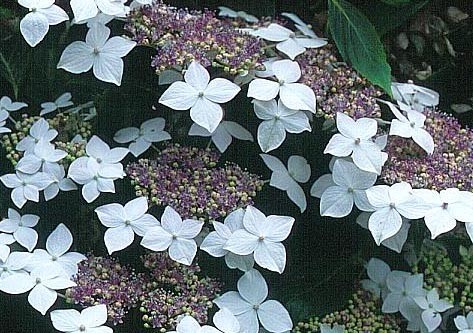Index
HYDRANGEA macrophylla 'Lanarth White'
Bigleaf Hydrangea, French Hydrangea

Les produits ont été ajoutés à votre liste d'envies.
Les éléments ont été supprimés de votre liste d'envies.
:: Hydrangeacea
:: HYDRANGEA
:: macrophylla
:: 'Lanarth White'
- Type of products available: 0/1/1P9
 Main asset
Main asset
Original bicolour variety, offering a contrast of forms and colors on the same inflorescences.
 Remarks
Remarks
The central fertile flowers color is dependent on the pH and the composition of the soil. The more the soil is acidic and in the presence of aluminum (sulphate of alumina, shale), the more the flowers will be purple to bluish.
Hydrangea of medium development, found in 1949 in a garden in Lanarth (UK). Flat (lacecap) inflorescences consisting of pure white sterile flowers, peripheral and punctually among the fertile flowers, and central small fertile flowers blue to pink depending on the soil, appearing on the wood of the previous year.
- Uses: Shrub beds, mixed hedges
Global caracteristics:
- Type of foliage: deciduous
- Habit: round
- Height: 1.30 m x 1.50 m (4.3 ft x 5 ft)
- Growth: fast
- Flowering period: July to October
Shape and colours:
- Foliage shape: lanceolated
- Foliage colour: light green
- Foliage colour in autumn: yellow
- Flowers shape: lacecap
- Flowers colour: white
Plantation:
- Soil type: little limestone and not too arid
- Exposure: sun, part-shade
- Hardiness: - 20 °C (-4 °F - USDA zone 6b)

